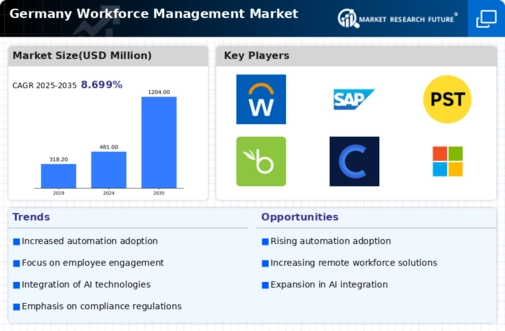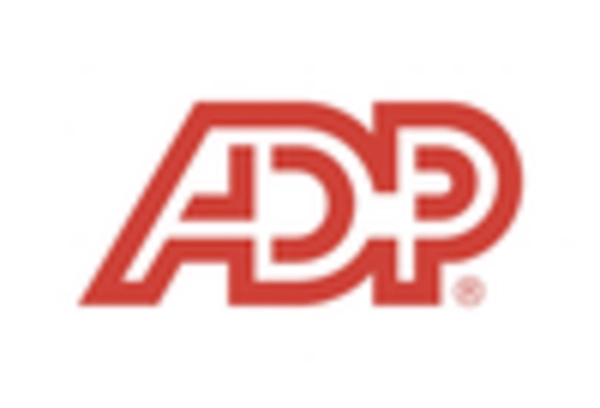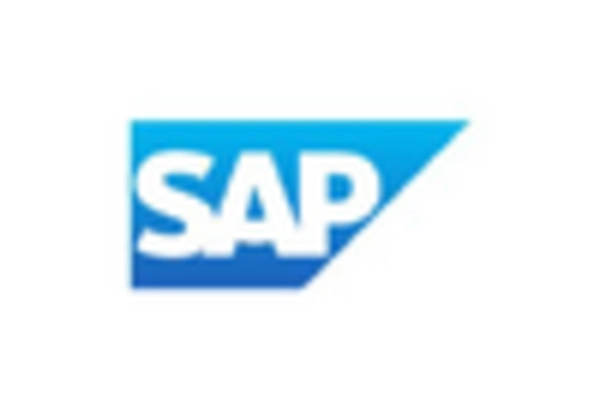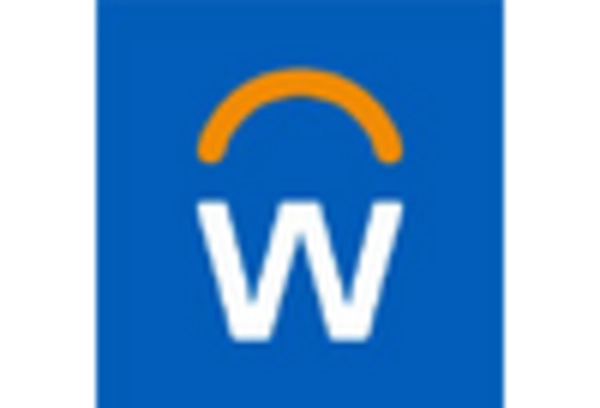Shift Towards Remote Work Models
The The workforce management market is adapting to the increasing prevalence of remote work models. is adapting to the increasing prevalence of remote work models. As organizations embrace flexible working arrangements, there is a rising demand for tools that facilitate remote workforce management. This shift is prompting companies to invest in solutions that support employee monitoring, performance tracking, and communication. Recent data suggests that approximately 40% of German companies have implemented remote work policies, which has led to a surge in the adoption of digital workforce management platforms. These platforms are essential for maintaining productivity and engagement among remote employees, thereby driving growth in the market.
Focus on Data-Driven Decision Making
The The workforce management market is witnessing a growing emphasis on data-driven decision-making. is witnessing a growing emphasis on data-driven decision-making. Organizations are increasingly leveraging analytics to gain insights into workforce performance, employee engagement, and operational efficiency. This trend is likely to enhance strategic planning and resource allocation, as companies seek to optimize their workforce. It is estimated that around 50% of businesses in Germany are utilizing data analytics tools to inform their workforce management strategies. This reliance on data not only improves decision-making but also fosters a culture of continuous improvement within organizations, thereby propelling market growth.
Regulatory Compliance and Labor Laws
In Germany, the workforce management market is significantly influenced by stringent labor laws and regulations. Companies must adhere to various compliance requirements, including working hours, employee rights, and data protection. The complexity of these regulations necessitates robust workforce management solutions that can ensure compliance while minimizing risks. As a result, the demand for software that can manage these compliance aspects is on the rise. It is estimated that around 30% of organizations in Germany are currently investing in compliance-focused workforce management tools. This trend indicates a growing recognition of the importance of regulatory adherence in maintaining operational integrity and avoiding potential penalties.
Technological Advancements in Automation
The The workforce management market is experiencing a notable shift due to advancements in automation technologies. is experiencing a notable shift due to advancements in automation technologies. Automation tools streamline various HR processes, enhancing efficiency and reducing operational costs. As organizations increasingly adopt these technologies, the market is projected to grow at a CAGR of approximately 10% over the next five years. This growth is driven by the need for real-time data processing and improved decision-making capabilities. Furthermore, automation reduces human error, which is crucial in maintaining compliance with labor regulations. Consequently, businesses are likely to invest in automated workforce management solutions to optimize their operations and improve overall productivity.
Rising Demand for Employee Training and Development
In the context of the In the context of the workforce management market, there is a marked increase in the demand for employee training and development programs., there is a marked increase in the demand for employee training and development programs. Companies recognize that investing in their workforce is essential for maintaining competitiveness and fostering innovation. As a result, organizations are allocating more resources towards training initiatives, which is reflected in the market's growth. Recent statistics indicate that approximately 60% of German firms are enhancing their training budgets, leading to a surge in the adoption of workforce management solutions that facilitate training tracking and performance evaluation. This focus on development not only improves employee satisfaction but also contributes to overall organizational success.

















Leave a Comment